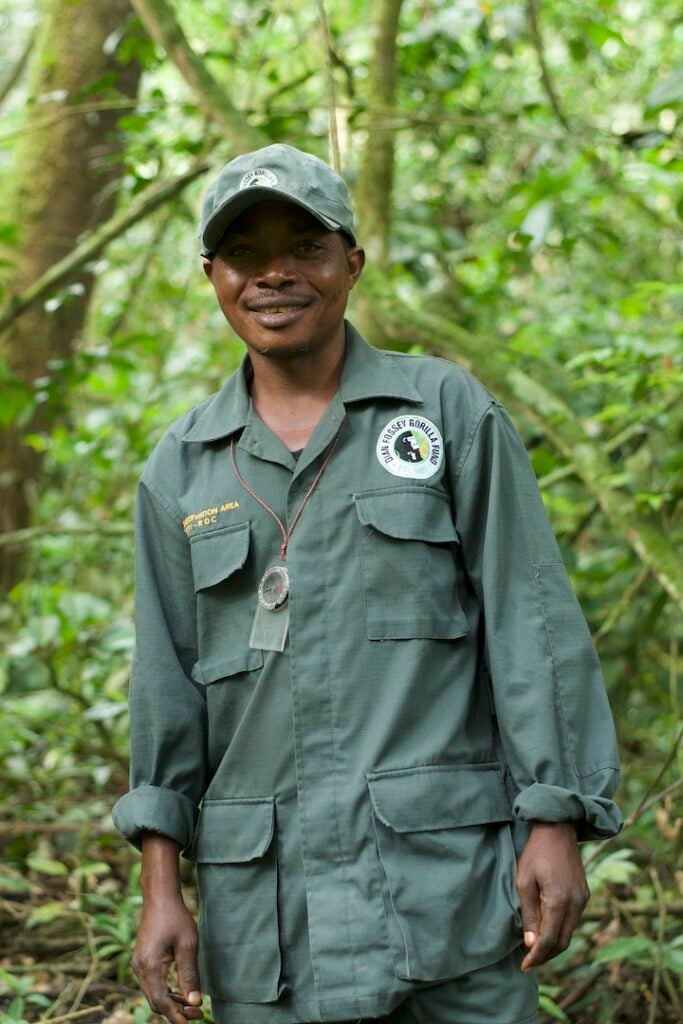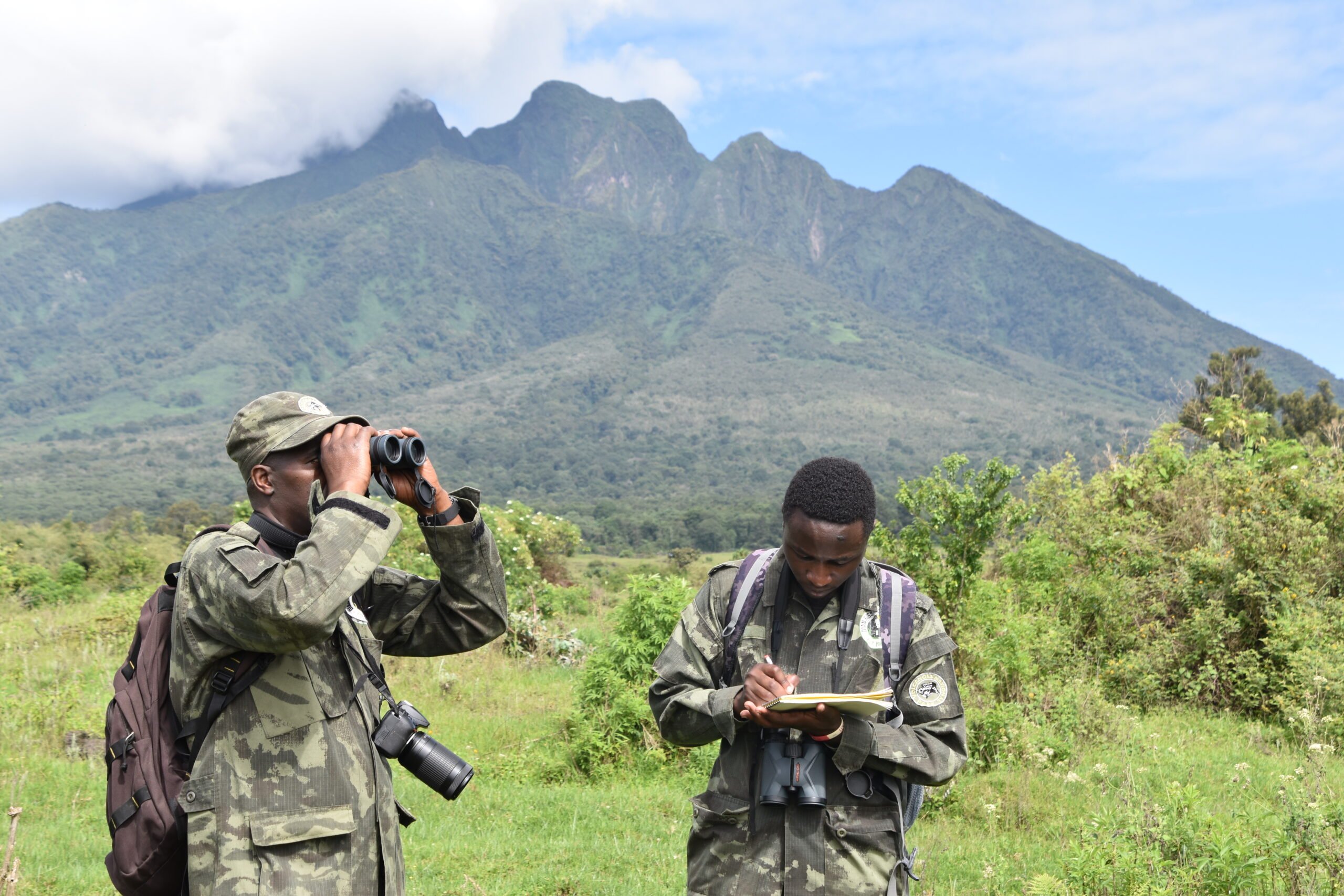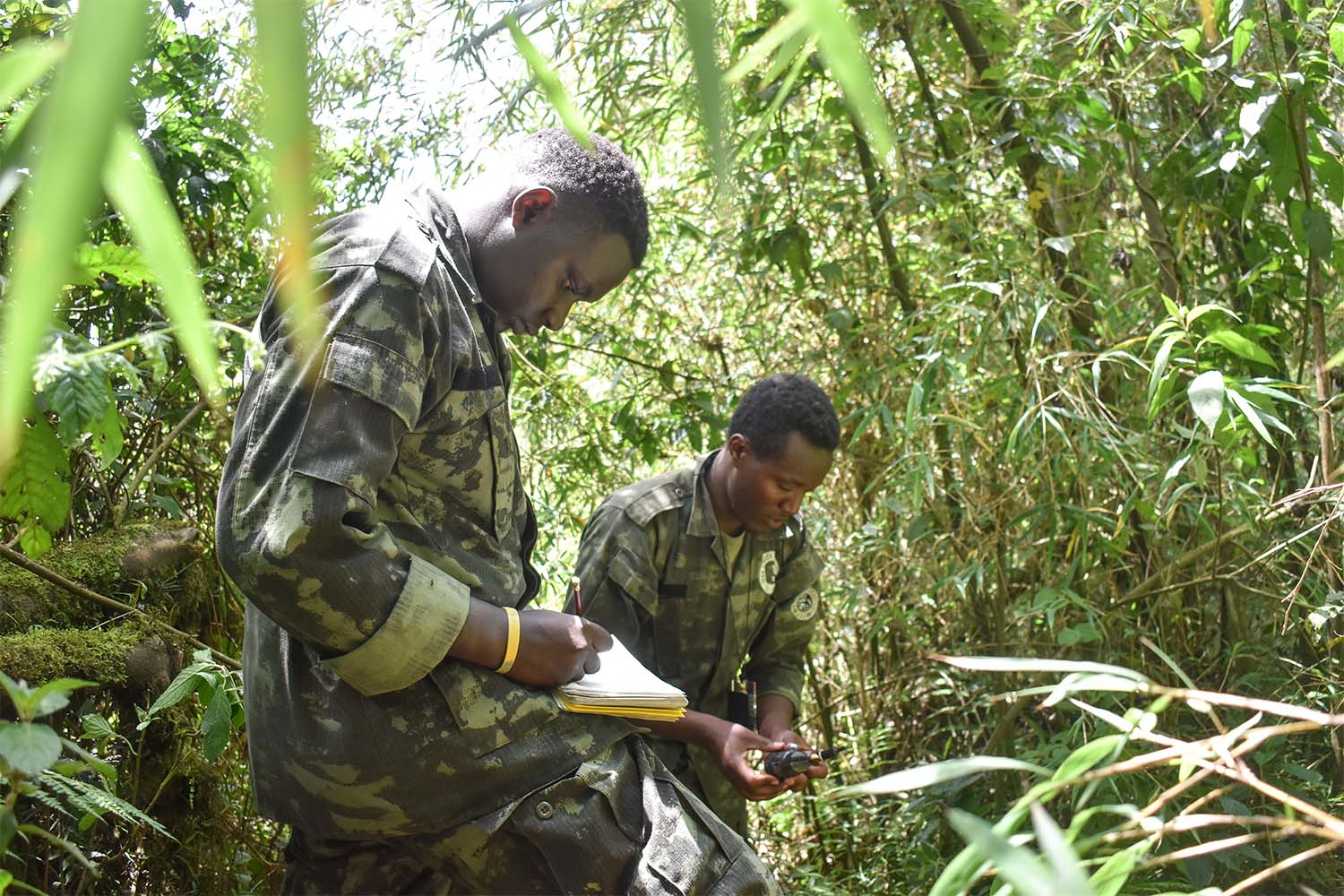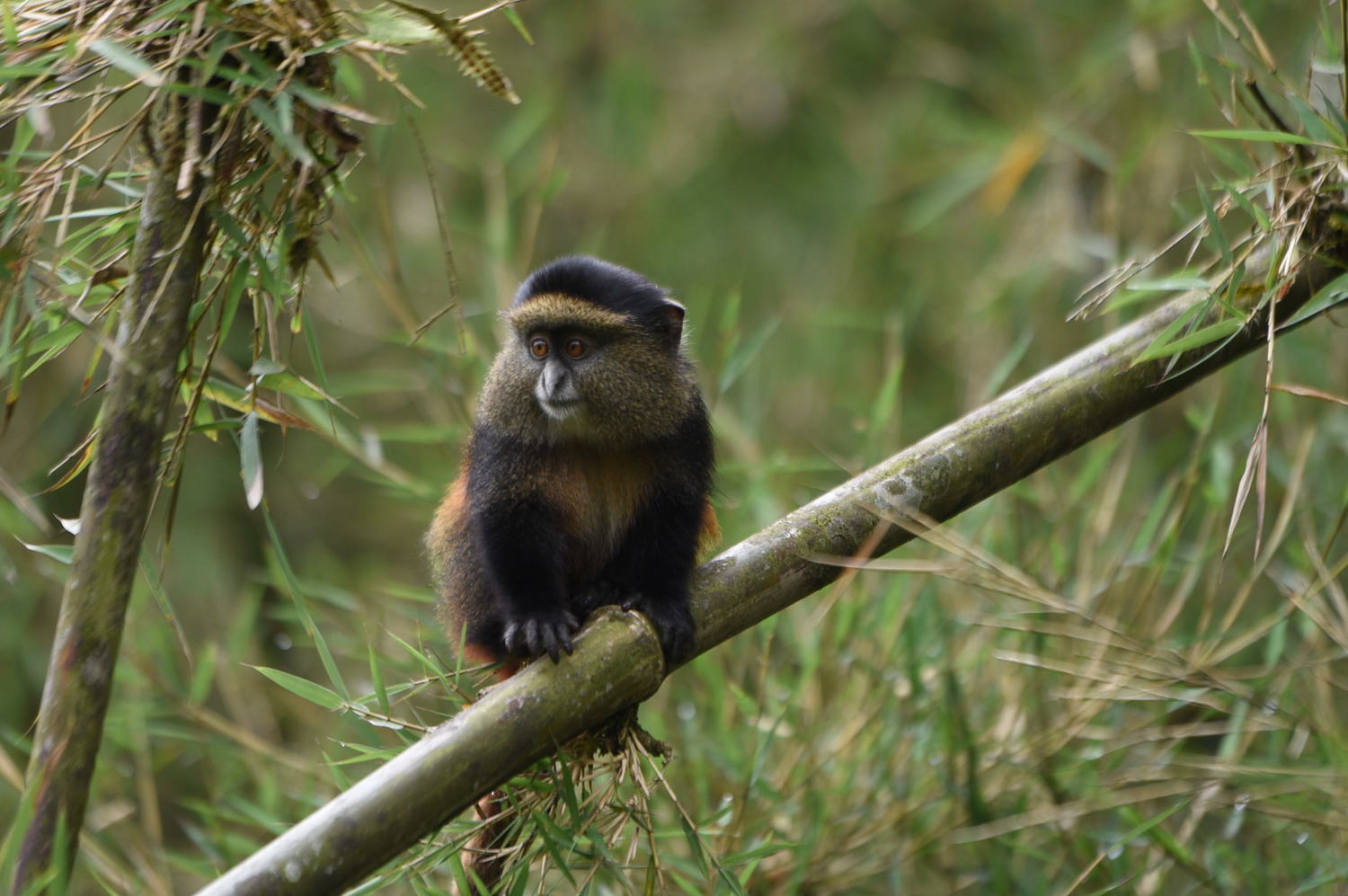Our Rwanda-based communication assistant Cedric Ujeneza recently spent time at our remote field site in the Democratic Republic of the Congo – the Nkuba Conservation Area (NCA), which now covers more than 2,400 square kilometers and is home to hundreds of gorillas, chimpanzees and other important wildlife. This story is part of a series by Cedric, as he observed our work there protecting this forest and addressing the basic needs of the surrounding communities.
The Congo Basin rainforest, which is the second-largest in the world, faces many challenges including climate change, deforestation, and loss of biodiversity. And recent research suggests that this primary forest could be entirely lost by the end of the century, if current rates of deforestation continue. So, in addition to protecting critically endangered Grauer’s gorillas, our teams in DR Congo study many of the animals and plants living in these biodiverse forests.
“This work is important because information we gather on these diverse species helps us understand their complex ecosystem and is a crucial part of effective conservation,” says Yntze van der Hoek, Ph.D., the Fossey Fund’s senior biodiversity researcher.

Our biodiversity trackers
Our biodiversity research in the region could not be done without our incredible trackers, who work in remote and dense forests for weeks at a time, including during the rainy seasons when rivers and streams are full and hard to traverse. While some trackers focus on gorillas, others collect data on additional species.
Nyongo Isaya Théophile (Nyongo) and Kamukaye Julien Changlay (Julien) are two of our biodiversity trackers. Both have studied environmental sciences and sustainable development at a regional institute for higher education.
Nygongo (pictured above) and Julien (pictured below) are responsible for collecting data for several of our projects. For example, they aid our acoustic monitoring of wildlife, monitor the behavior of globally threatened grey parrots, conduct vegetation surveys, and install camera traps in the forest. They also collect seeds for the community botanical garden at our base camp in the village of Nkuba.
Julien started in 2020 as a tracker in our biodiversity program, after serving as a community leader educating local communities about the role of biodiversity. He notes that the huge size of the Nkuba forest is quite challenging, so they have to walk long distances every day – usually at least five hours. But he loves seeing the variety of plants and animals that are found nowhere else.
“Though we are away from our families in the forest for two weeks at a time, the best thing is that we are a team and working as a team is very motivating. We have different skill sets and that helps us to be more creative and come up with new ideas.
“Working in an environment where you are surrounded by people who care about what you do and want to see you succeed is really important. What we do every day increases our knowledge about nature and it makes us take the lead in protecting it.
“I am very grateful to the Fossey Fund for joining the people who live around this forest to protect it. It is very valuable and important,” adds Julien.
Nyongo has been a tracker in our biodiversity program since 2021, after serving as a primary school teacher. “I love being a tracker because it is not just about getting the job done. I get to work on different projects that help me gain different knowledge and skills,” he says.
“My message is that we must all help protect this forest because it plays an important role. It is the home of many animals and plants that we need to survive, including the Grauer’s gorillas.”






